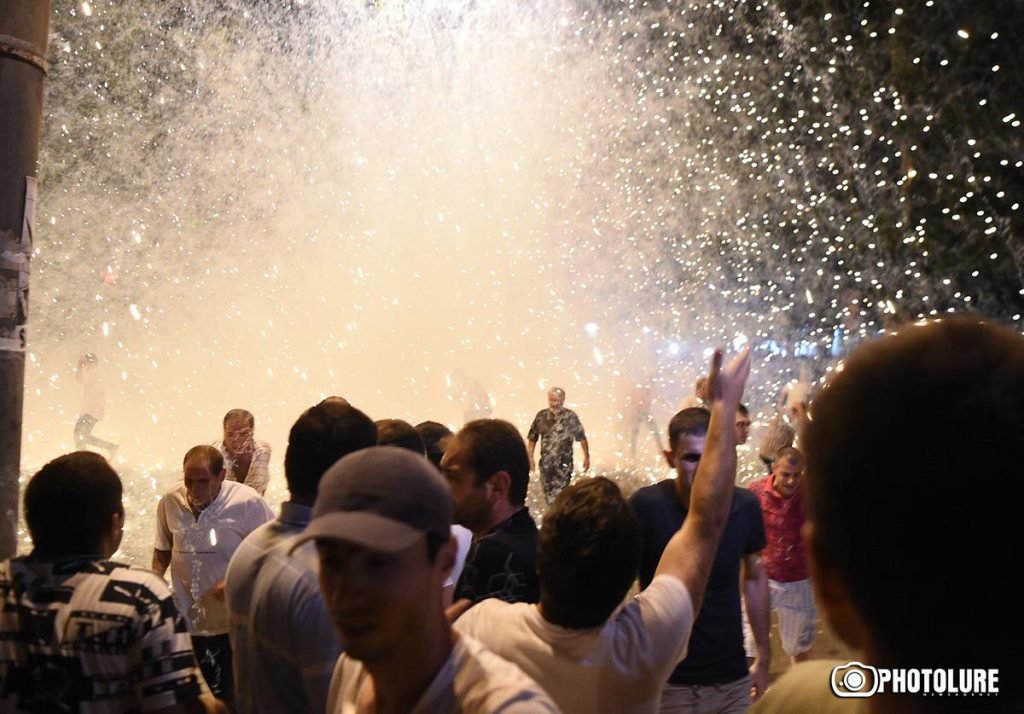By Aram Ghoogasian
The 20th century, violent as it was, saw the rise of nonviolence as a prominent strategy. Consequently, it also changed the public perception of violent uprisings.
Erebuni, a district in the Armenian capital, is currently the site of such an uprising, one that comes on the heels of the Armenian government’s overreaction to a hostage standoff at a Yerevan police station.

The motives of the hostage takers and the protesters who are responding to the detention of civilians without charge have been commented on extensively enough in the press. But many professional and amateur commentators alike have attempted to moralize the use of violence, often prefacing their columns with the disclaimer that they in no way condone violence committed by either the state or the populace.
It’s fairly obvious that the uprising is a symptom of the population’s general frustration with the Republic of Armenia’s undemocratic institutions, rampant inequality, and high rate of poverty. Since attempts to affect change through legal channels such as elections have proven impotent thus far, many have tried their luck in the streets, especially in the past decade or so. This time around, the people in Erebuni have selected stones and, in the case of the hostage takers, rifles as their tools of choice. Columnists and scholars have correctly pointed out these root causes while taking pains to delineate the distinction between understanding and supporting the recent escalation in tactics.
But the violence in Erebuni in particular—and political violence in general—needs to be read through a different lens. Asking whether violence is right or wrong is the incorrect question to ask. Rather, the more important question is whether violence can achieve the desired result in a specific situation.
As in most cases, the state will, by definition, have the greatest capacity to commit violence. Civilians, no matter how well trained, can’t change that basic fact, nor can they defeat the state’s guns and tanks if their confrontation with the police should reach such a crescendo. However, violence can be a useful tool in certain circumstances as long as it can convince the state that it is in its best interests to concede, retreat, or surrender. In other words, the Armenian government must come to the conclusion that the clampdown on dissent isn’t worth the social upheaval and backlash. It’s a formula that, however detestable and unpleasant it may seem, has worked time and time again in modern history.
Nonviolent disobedience could be the most effective avenue to achieve significant reform—or perhaps something even more radical—in a given context. And in this particular case, hindsight will certainly be necessary to coherently evaluate the methods of the uprising in Erebuni. To categorize it as exclusively violent at such an early stage is itself a simplification that leaves out the possibility that the protesters may organize and diversify their tactics as the unrest continues. But to pontificate and dismiss violence as out of hand on the presumption that it cannot work is not only ideologically rigid, it’s ahistorical.
Aram Ghoogasian is a graduate of the University of California, Los Angeles, and a former columnist for the Daily Bruin.



To Aram, can you name an occasion in Armenia’s 25-year history when violence has worked? When has it ever contributed to domestic progress or social change? The pages of its modern history are full of violent episodes, most far worse than the Daredevils siege: the 1996 storming of parliament by protesters; the 1999 killings of the defense minister, prime minister and legislators; the March 1st clashes; constant bottles and rocks being thrown at police in demonstrations; the 2013 Shant Haroutunian stun-grenade “revolution”; the list goes on and on. What has any of that produced? The reason to oppose violence in Armenia is, first and foremost, a tactical one. If it produced any results, that’s a different issue but it is, in my eyes, completely counterproductive.